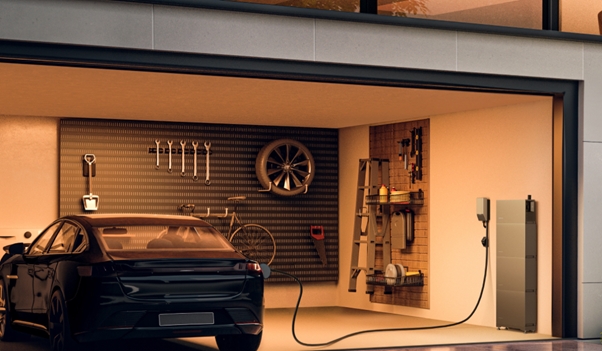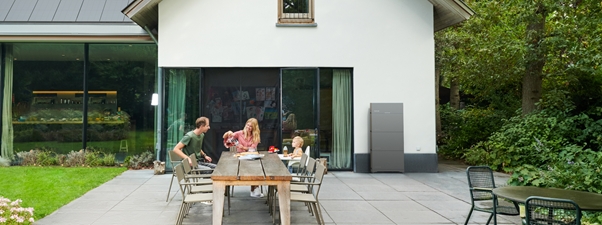Is My House Suitable for Solar Panels?
The suitability of a house for solar panels depends on several factors, including the roof's condition, orientation, and shading. However, advancements in solar technology mean that nearly any home can benefit from photovoltaics, even if your roof isn’t ideal. With adaptable installation options like ground-mounted, flexible, and portable systems, solar energy is accessible to more homeowners than ever.
Let’s explore the key considerations for determining whether they are a viable and efficient solution for your home.
How Do I Know if My House Is Suitable for Solar Panels?
Nearly all homes can benefit from solar panels, also called photovoltaics, to make them more efficient, regardless of their current energy efficiency rating. Even if your roof isn’t suitable, you can do a ground-mounted system or opt for portable photovoltaics that you can set up in your yard or hang from a balcony. Let’s take a look at some factors that will help you decide.
Roof Age and Condition
Roofs typically last between 25 and 40 years. If your roof is in the older end of that range, it might not be suitable because aging roofs may be too weak to support the panels and mounting hardware. Similarly, any structural damage should be fixed before installation.
Roof Construction
Regardless of how your roof is constructed, there is a solution for nearly any situation, even flat or curved roofs. Flat roofs can have panels mounted similarly to a ground-mounted system using mounting systems to achieve the right angles. Curved roofs can use flexible photovoltaics to maximise their energy output.
Orientation
Orientation is a major factor in determining your solar output. For maximum output, south-facing, southeast, and southwest roofs are best. They still work relatively well on east—or west-facing roofs; however, those facing north will experience much lower efficiencies.
Pitch
Any roof angle between 10 and 60 degrees would work, but the ideal angle in the UK to maximise solar energy production is 30 to 40 degrees. If your roof has a different pitch, you can still achieve this angle using appropriate mounting systems.
Shading
Shading from trees or other physical obstructions can be challenging. Even if one photovoltaic cell is shaded, your entire system’s output will be reduced. Still, if you have unavoidable shade, there are ways to deal with this. For instance, professional installers can install micro-inverters so that each panel operates independently and will not impact the output of others.
Size
Whether or not your home is big enough depends entirely on what size photovoltaic array you want. For example, a 4kW system needs about 28 square meters. If your roof is too small for your desired output, add ground-mounted panels or hang portable photovoltaics from a balcony to achieve more.
Planning Permission
Planning permission for photovoltaics is usually not required unless your area is a heritage site, conservation area, a listed building, or a protected wildlife area. If you are unsure, check with your local authorities.

What’s the Best Roof Material for Solar Panels?
Virtually any roofing material can be fitted with photovoltaics. These are the most common materials in the UK.
- Asphalt shingles are very common and are the easiest to install panels by drilling through the shingles to attach the mounting system. Metal flashing is placed over the drill holes to prevent leaks.
- Metal roofing also makes for easy installation because the brackets can be directly clamped to seams rather than drilling through. It also makes it easy to tilt the panels to optimise the angle and achieve maximum sun exposure.
- Clay or concrete tiles are also common in the UK, but it is more challenging to install photovoltaics because tiles, especially those made from clay, are more brittle. Installers must remove the tiles and secure the mounting brackets to the rafters, increasing installation costs. The tiles are then placed back on, and the panels can be attached.
- Tar and gravel on flat roofs also work because they provide a sturdy foundation to attach the panels. The main challenge here is the additional brackets required to place the photovoltaic panels at the correct angle.
What’s the Best Direction for Solar Panels in the UK?
The orientation of your photovoltaic panels plays a significant role in how much electricity they can produce in the UK. Even if your roof does not face south with a 30 to 40-degree pitch, you can still achieve sufficient output, especially if your system can be adjusted throughout the seasons, like placing them at 60 degrees for the winter months when the sun is lower in the sky.
North-facing
North-facing rooftops in the UK are the least favourable option. This system would still generate electricity, but much less than other directions. One option is to mount them against the roof's pitch so they can capture more light, requiring additional mounting systems. Alternatively, ground-mounted systems also work very well.
East-facing
An east-facing roof will get direct sunlight in the morning only, so it generates about 20% less than south-facing roofs. This means you may need to invest in extra panels to meet your energy needs. These systems will greatly benefit from solar battery storage so you can store that morning power for later in the day when needed.
For instance, you can use the EcoFlow PowerOcean (Single-Phase) battery storage system, which starts at 5kWh and is expandable to 45kWh. It’s also waterproof, so you can put it indoors or outdoors, wherever you have the space. What about those on three-phase power systems? The EcoFlow PowerOcean (Three-Phase) offers the same great capacity and waterproof rating.
West-facing
Since the sun sets in the west, west-facing systems are sometimes slightly better than eastern ones since they will receive afternoon sunlight, when solar output tends to be the highest. When those peak electricity tariffs kick in, you will also get early evening output. Still, just like an east-facing system, you would benefit from solar battery storage to store the energy you produce in the afternoon for later when you need it.
You can also do a home battery retrofit if you already have photovoltaic panels. There is no need to change anything on your current solar array when you use the EcoFlow PowerOcean DC Fit. You simply connect it to your system between your array and your existing inverter. The batteries will be seamlessly integrated into your system without removing or changing the current inverter, making it easy to DIY.

Frequently Asked Questions
- Is My Roof Big Enough for Solar Panels?Solar panels can be installed on any roof size, even small sheds. Still, a 4kW system requires about 28 square meters of surface area to give you an idea of how much space you need.
Final Thoughts
Solar panels are a versatile and sustainable energy solution suitable for almost any home with the right adjustments. Understanding your home's unique features, from roof condition to orientation and shading, can help you optimise your solar energy output. Even if your roof isn’t optimal, options like ground-mounted systems and battery storage ensure you can still enjoy the benefits of clean, renewable energy.
To make the most of your investment, consider EcoFlow PowerOcean (Single-Phase) home battery systems to optimise your energy usage and start your journey to energy independence today.



